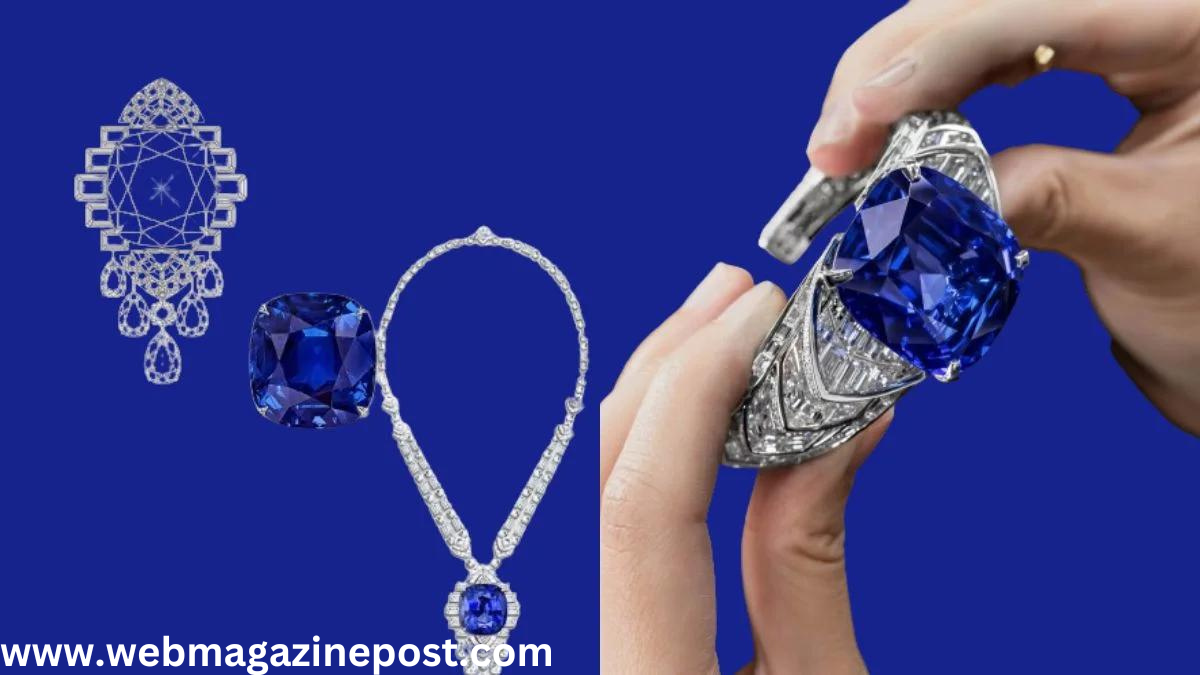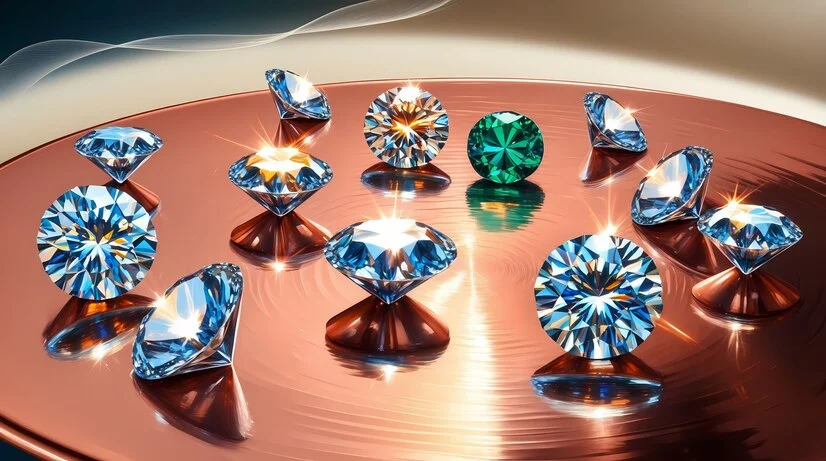
The Allure of Saphıre: 100% Comprehensive Guide to the Gemstone
Introduction to Saphıre
Saphıre has captivated humanity for centuries, symbolizing wisdom, royalty, and purity. Their rich colors and enduring brilliance make them one of the most cherished gemstones in the world. Whether set in a royal crown or an engagement ring, sapphires are more than just beautiful stones—they are steeped in history, culture, and meaning. This article delves into everything you need to know about sapphires, from their origins and types to how they are valued and cared for.
What is Saphıre?
Saphıre is a precious gemstone, a variety of the mineral corundum, which is composed of aluminum oxide. While sapphires are typically associated with the color blue, they can actually occur in a range of colors, except red, which is classified as ruby. The presence of trace elements like iron, titanium, and chromium gives sapphires their wide spectrum of hues. Historically, sapphires have been prized not only for their beauty but also for their supposed protective properties and connection to divine favor.
The History of Sapphires
The allure of sapphires can be traced back to ancient civilizations. In ancient Persia, it was believed that the sky was blue because it reflected the hue of a massive sapphire upon which the Earth rested. Sapphires were also treasured by the Greeks and Romans, who associated the stone with Apollo and used it for protection in battles and during journeys. One of the most famous sapphires is the 12-carat oval blue sapphire in Princess Diana’s engagement ring, now worn by Kate Middleton, which has cemented its place in modern history.
The Different Colors of Sapphire
While the iconic blue sapphire is the most recognized, sapphires come in an array of stunning colors. The Padparadscha sapphire, named after the lotus blossom, is particularly rare and highly sought after for its unique pinkish-orange hue. Each color variant of sapphire has its own charm and is valued differently based on its rarity and demand.
Where Are Sapphires Found?
Sapphires are mined in several locations around the world, with some regions being particularly renowned for producing high-quality stones. Sri Lanka, known as the “Island of Gems,” is famous for its stunning Ceylon sapphires. Myanmar (Burma) is another significant source, particularly of deep blue sapphires. Other notable locations include Madagascar, Australia, Thailand, and Montana in the United States. The origin of a sapphire can significantly affect its value, with stones from certain regions being more prized due to their unique characteristics.
The Value of Sapphires
Several factors influence the value of sapphire, including its color, clarity, cut, and carat weight. The most valued sapphires are those with a deep, vivid blue color, often referred to as “cornflower blue.” Clarity is also important; while inclusions are common in sapphires, those with fewer visible flaws are more valuable. The cut of the sapphire can enhance its brilliance, and larger stones are generally more valuable. Prices can range significantly, from a few hundred dollars per carat for lower-quality stones to thousands per carat for the finest specimens.
How Sapphires Are Mined
The mining of sapphires has evolved over time, from traditional methods like panning and hand-dug pits to more modern techniques. In places like Sri Lanka, artisanal mining is still common, with workers using simple tools to extract sapphires from riverbeds and shallow deposits. In other regions, large-scale operations use heavy machinery to mine sapphires from deep underground. Ethical considerations are increasingly important, with many consumers seeking out sapphires that are mined sustainably and without exploitation.
Saphıre Treatments

To enhance their color and clarity, many Saphıre undergo treatments such as heat treatment, which is the most common. This process can improve the stone’s color and remove inclusions, making it more visually appealing. Some sapphires are also treated with diffusion or chemical processes to alter their color. While treated sapphires are widely accepted in the market, untreated sapphires, particularly those with excellent natural color and clarity, are more rare and valuable. It’s important for buyers to know whether a sapphire has been treated, as this affects both its value and care.
The Symbolism of Saphıre
Saphıre has long been associated with spiritual and cultural symbolism. Sapphires have also been linked to divine favor, with clerics in the Middle Ages wearing them to symbolize Heaven. In modern times, sapphires are popular in engagement rings, symbolizing fidelity, sincerity, and truth. Their deep blue color is often associated with wisdom and calmness, making them a meaningful choice for jewelry that conveys sentiment and significance.
Famous Saphıre Jewelry
Saphıre has adorned some of the most famous jewelry pieces in history. The British Crown Jewels include several notable sapphires, such as the Stuart Sapphire, which is set in the Imperial State Crown. Princess Diana’s engagement ring, featuring a stunning blue sapphire surrounded by diamonds, is perhaps one of the most iconic sapphire pieces in recent history. Other notable pieces include the Rockefeller Sapphire, a flawless 62-carat stone that sold for millions at auction, and the Star of India, a star sapphire that is one of the largest of its kind.
How to Care for Your Saphıre Jewelry
To keep Saphıre jewelry looking its best, proper care is essential. Sapphires are durable stones, ranking 9 on the Mohs scale of hardness, but they can still be scratched or damaged if not handled properly. Cleaning your sapphire jewelry regularly with warm, soapy water and a soft brush will help maintain its brilliance. Avoid exposing sapphires to harsh chemicals or extreme temperatures, as this can affect their appearance. When not in use, store your sapphire jewelry in a soft pouch or lined jewelry box to prevent scratches.
Saphıre in Popular Culture
Saphıre have made their mark in popular culture, appearing in films, literature, and fashion. The “Heart of the Ocean” necklace from the movie Titanic, while fictional, has become an iconic representation of sapphire jewelry. Sapphires have also been featured in numerous novels and stories, often symbolizing royalty, wealth, and mystery. In fashion, sapphires continue to influence trends, with designers incorporating them into contemporary jewelry collections that appeal to both traditional and modern tastes.
Synthetic vs. Natural Sapphires
Synthetic sapphires, created in laboratories, are chemically identical to natural sapphires but are produced in controlled environments. They offer a more affordable alternative to natural sapphires and are often used in industrial applications as well as in jewelry. However, natural sapphires, with their unique inclusions and variations, are generally more prized and valuable. When purchasing a sapphire, it’s important to know whether it’s natural or synthetic, as this can significantly impact its value.
The Future of Sapphires
The future of sapphires looks bright, with ongoing trends in jewelry design and increasing awareness of ethical sourcing. As consumers become more conscious of the origins of their gemstones, there is a growing demand for sapphires that are mined sustainably and fairly. Advances in technology may also lead to new ways of enhancing and preserving sapphires. Whether used in traditional or contemporary settings, sapphires are likely to remain a beloved gemstone for generations to come.
Conclusion
Saphıre are more than just beautiful gemstones; they are a symbol of enduring elegance, rich history, and profound meaning. From their stunning array of colors to their significance in culture and spirituality, sapphires have earned their place as one of the world’s most cherished stones. Whether you are drawn to their deep blue hues or the allure of a rare Padparadscha, sapphires offer something for everyone. As you consider adding a sapphire to your collection, remember the factors that influence its value, the importance of proper care, and the timeless beauty that makes this gemstone truly special.
FAQs
How can I tell if a Saphıre is real?
To determine if a Saphıre is real, look for inclusions using a magnifying glass. Natural sapphires often have tiny imperfections, while synthetic ones may be flawless. Additionally, real sapphires feel cool to the touch and should not show air bubbles when inspected closely.
What makes a sapphire valuable?
The value of a sapphire is determined by its color, clarity, cut, and carat weight. The most prized sapphires have a deep, vivid blue color, minimal inclusions, a well-executed cut, and a significant carat weight.
Are there ethical concerns with sapphire mining?
Yes, ethical concerns in sapphire mining include environmental damage and the exploitation of workers. Many consumers now seek out sapphires that are certified as ethically sourced to ensure they are supporting responsible mining practices.
How can I care for my sapphire jewelry?
To care for your sapphire jewelry, clean it regularly with warm, soapy water and a soft brush. Avoid exposing it to harsh chemicals or extreme temperatures. Store it in a soft pouch or a lined jewelry box to protect it from scratches.
Can Saphıre be used for purposes other than jewelry?
Yes, sapphires have industrial uses, particularly in watchmaking and electronics. Synthetic sapphires are used in the production of watch crystals, semiconductor wafers, and other high-tech applications due to their durability and optical properties.


